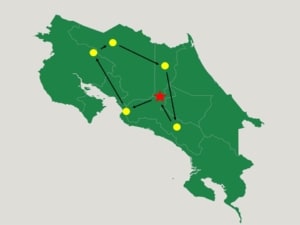The Best of COSTA RICA
TOUR DETAILS
DATES: January 2025
DURATION: 13 days/12 nights
COST: $4795
INCLUDES: airport pick-up/drop off, lodging in twin double beds, meals, private vehicle, entrance fees, 2 guides including a bilingual local guide, and Sue Riffe.
ARRIVAL/DEPARTURE: Juan Santamaria Int. Airport (SJO)
DIFFICULTY: moderately easy
EXPERIENCE: advanced beginners and up
FOCUS: birding, photography while birding

Keel-billed Toucan
SOLO SUPPLEMENT: $800
DEPOSIT: $1,000
FINAL PAYMENT: 120 days before departure
GROUP SIZE: 7 people (plus 2 guides, Sue Riffe)
EXPECTED BIRDS: TBD
ITINERARY
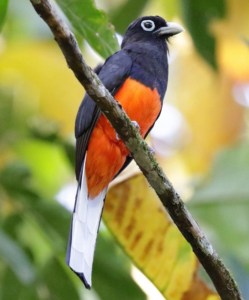
Baird’s Trogon
DAY 1 – International arrival to San José
International arrival to Juan Santamaria Int. Airport (SJO) in San José, Costa Rica. Pick up and transfer to Hotel San Ignacio. The hotel grounds have a great variety of birds. If you arrive early, start your bird list here.
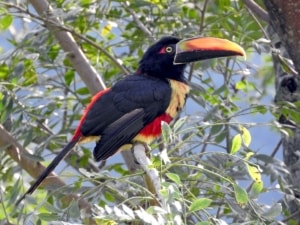
Fiery-billed Aracari
DAY 2 – Tropical Lowlands, Tárcole, and Villa Lapas
After a nice breakfast and morning birding around the hotel, we leave the city for Tárcole. We take a two-hour drive that brings us from near the continental divide, down to the Pacific coast. This area is unique as it sits on the border of wet and dry forest, near the coast, and bordered by a river. This afternoon we take our first of several boat rides for the trip on the spectacular Tárcole River. After a fun day of birding, our hotel for the next two nights is Hotel Villa Lapas. (b, l, d,)
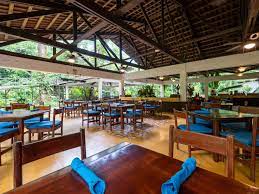
Hotel Villa Lapas
Target birds at San Ignacio: Long-tailed Manakin, Hoffmann’s Woodpecker, Fiery-billed Aracari, Blue-vented Hummingbird, and Ferruginous Pygmy-Owl.
Target birds at Villa Lapas: Scarlet Macaw, Velvety Manakin, White-whiskered Puffbird, Great Tinamou, Ruddy Quail-Dove, Pacific Screech-Owl, Baird’s Trogon, Black-throated Trogon, and Orange-chinned Parakeet.

Yellow-naped Parrot
DAY 3 – Carara National Park
Carara National Park is our destination for the day. This park is located were wet tropical lowlands meets tropical dry forests. With an elevation range from 328 feet up to 1640 feet, this provides a variety of habitats to explore. It is also why it is a must stop on our birding itinerary. Over hundred Scarlet Macaws breed in the area along with over 300 other species. Carara means crocodile and should be seen today at the crocodile bridge. (b, l, d)
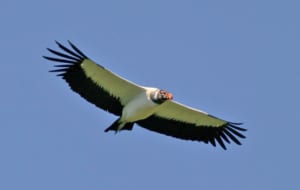
King Vulture
Target species: Crested Guan, Yellow-naped Parrot, Slaty-tailed Trogon, Yellow-throated Toucan, Orange-fronted Parakeet, Black-and-white Owl, Spectacled Owl, Cocoa Woodcreeper, and King Vulture.
DAY 4 – Up to the mountains we go
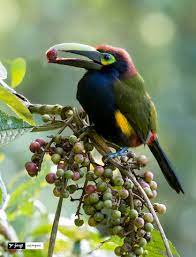
Yellow-eared Toucanet
We enjoy a relaxing breakfast and some final bird feeder action at Hotel Villa Lapas before heading north. As we leave the tropical lowlands, we skirt Tenorio Volcano which is our birding focus for the next two days. With a few stops along the way, our lunch is in the cute town of Bijagua de Upala. It is situated near the continental divide with views of Tenorio volcano to the south. A short hop away is our lodging for the next two nights, Las Heliconias Lodge. (b, l, d)
Las Heliconias Lodge
Target birds: Yellow-eared Toucanet, Lineated Woodpecker, Gray-throated Leaftosser, Wedge- billed Woodcreeper, Barred Antshrike, Keel-billed Motmot, Ocellated, Spotted, and Bicolored Antbirds.
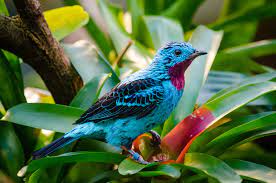
Lovely Cotinga
DAY 5 – Tenorio Volcano area
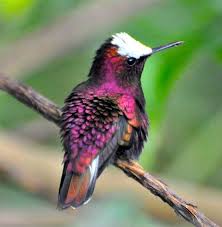
Snowcap
Our lodge has quite an extensive bird list which we will bird today. With three hanging bridges, 3.5 miles of trails, and primary rainforest, lots of birds will be added to our trip list. This recently remodeled lodge is adjacent to Tenorio Volcano National Park and sits 2,300 to 3,800 feet above sea level. We will have plenty of birds to look for today. (b, l, d)
Target birds: 15 species of hummingbirds, Lovely Cotinga, Tody Motmot, Rufous Motmot, Crested Owl, Carmiol’s Tanager, Rufous-winged Tanager, Lesser Greenlet, Stripe-breasted Wren, Olive-backed Euphonia, Scale-crested Pygmy-Tyrant and Montezuma Oropendola.
DAY 6 – Tapir Valley and transfer to Caño Negro

Black-crested Coquette
Today we head to Tapir Valley Tenorio National Park for a morning adventure. Tenorio boasts four life zones and was created in 1995 to protect this active volcano. We might even hike to the Rio Celeste waterfall, one of the most photographed spots in Costa Rica. Expect beautiful trails with some elevation gain this morning. We leave the northern reaches of Costa Rica for the Caño Negro Lodge, known for its wetlands, for two nights. (b, l, d)
Target birds: Snowcap (Hummingbird), Black-crested Coquette, Russet-naped Wood-Rail, Smoky-brown Woodpecker, Yellow-throated Toucan, Keel-billed Toucan, Short-billed Pigeon, Cinnamon Becard, Slaty Spinetail, Golden-hooded Tanager, Scarlet-rumped Tanager, Black-striped Sparrow, Buff-rumped Warbler, and Olive-crowned Yellowthroat.
DAY 7 – Caño Negro Wetlands
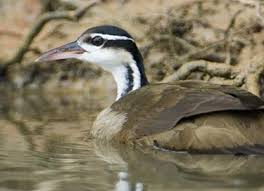
Sungrebe
Two different boat rides are scheduled today around Caño Negro. We should see just about every wetland egret, heron, and kingfisher this region supports.
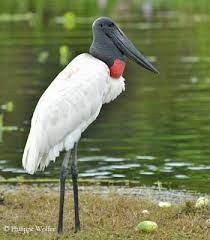
Jubaru
Target species: Jabiru, Sungrebe, Northern Jacana, Neotropic Cormorant, Russet-naped Wood-Rail, Bare-throated Tiger-Heron, Boat-billed Heron, Ringed, American Pygmy, Green and maybe even Green-and-rufous Kingfishers. Gray-headed Dove, Yellow-headed Caracara, Bat and Laughing Falcon, Mangrove Swallow, Yellow-throated Euphonia, Melodious Blackbird, and Morelet’s Seedeater.
DAY 8 – Sarapiquí and the eastern Tropical Lowlands

Blak-cheeked Woodpecker
Sarapiquí is our destination today. Our drive heads south down to the tropical lowlands. Expect short stops along the way for fun new species. The lodging for two nights is Hotel La Quinta de Sarapiquí. This eco-lodge is nationally certified as a sustainable lodge as they grow everything we will eat. We explore several ponds, river habitat, secondary growth lowland forest, and gardens around Sarapiquí. (b, l, d)
Target birds: Collared Aracari, Red-lored Parrot, Bright-rumped Attila, Gray-capped Flycatcher, Orange-billed Sparrow, Black-cowled Oriole, Red-throated Ant-Tanager, Crimson-collared Tanager, and Cinnamon-bellied Saltator.

Great Green Macaw
DAY 9 – La Selva Biological Station
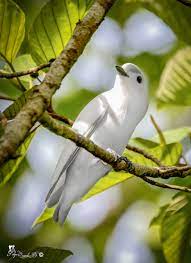
Snowy Cotinga
La Selva Biological Station is considered one of the most important sites for tropical research in the world. Look forward to two guided hikes here today, one in the day and one at night. The species richness is outstanding with over 2077 plants, 125 mammals, and 470 bird species recorded. The rest of the day is spent hitting hotspots in the region of Sarapiquí to add to our bird list. (b, l, d)
Target birds: Great Curassow, Slaty-breasted Tinamou, Gray-chested Dove, Blue-chested Hummingbird, Semiplumbeous Hawk, Great Green Macaw, Gartered Trogon, Chestnut-colored Woodpecker, Black-crowned Tityra, Snowy Cotinga, and Chestnut-headed Oropendola.
DAY 10 – South to Quetzales National Park
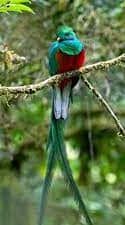
Resplendent Quetzal
After we devour the delicious fresh fruit with breakfast, the trek south begins. Quetzales National Park is the afternoon destination and then on to Toucanet Lodge for two nights. This Copey Valley sits in prime coffee producing area of Dota. The Copey Tree is common along the roads around here and gave the valley its name. 6,400 feet is the elevation of Toucanet Lodge and has multiple trails around the property. (b, l, d)
Target birds at Toucanet Lodge: Magenta-throated Woodstar, Violet Sabrewing, Northern Emerald-Toucanet, Mountain Elaenia, Brown-capped Vireo, Flame-colored Tanager, and Silver-throated Tanager.
DAY 11 – Quetzales National Park day 2
We have all day in Quetzales National Park including a nice sit down lunch. One of Costa Rica’s newest park as it was secured in 2006. The climate is cool and fresh. Due to its location high atop the Talamanca mountains, the park is typically covered in thick clouds. The elevation range of the park is 4,068-10,465 feet. The flagship bird for this national park is the declining Resplendent Quetzal. (b, l, d)

Flame-throated Warbler
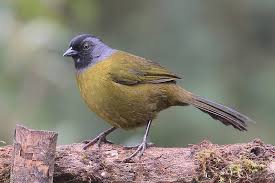
Large-footed Finch
Target birds in Quetzal NP: Resplendent Quetzal, Black Guan, Spotted Wood-Quail, Scintillant, Talamanca, and Volcano Hummingbirds, Costa Rican Pygmy-Owl, Bare-shanked Screech-Owl, Spot-crowned Woodcreeper, Ruddy Treerunner, Timberline Wren, Black-billed Nightingale-Thrush, Sooty Thrush, Black-and-yellow Silky-flycatcher, Sooty-capped Chlorospingus, Large-footed Finch, Yellow-thighed Brushfinch, Flame-throated Warbler, Black-cheeked Warbler, Collared Redstart, and Slaty Flowerpiercer.

Bare-shanked Screech-Owl
DAY 12 – Toucanet Lodge and north to San José
Our final day in the field as at Toucanet Lodge and all their wonderful habitat. There are lots of species that we want to tally before heading back to San Jose later in the day. Evening at the same Hotel San Ignacio. (b, l, d)
DAY 13 – Return Home via San José
Transfer to the airport for your international flight home. (b)

